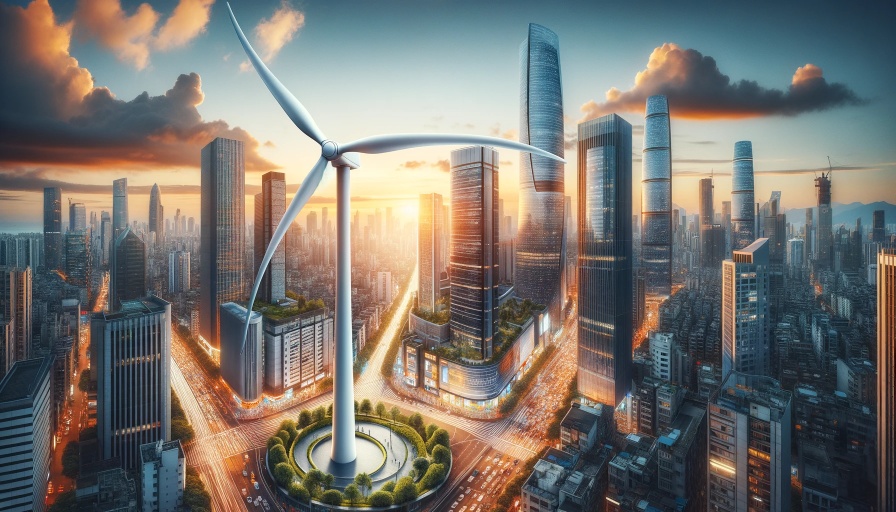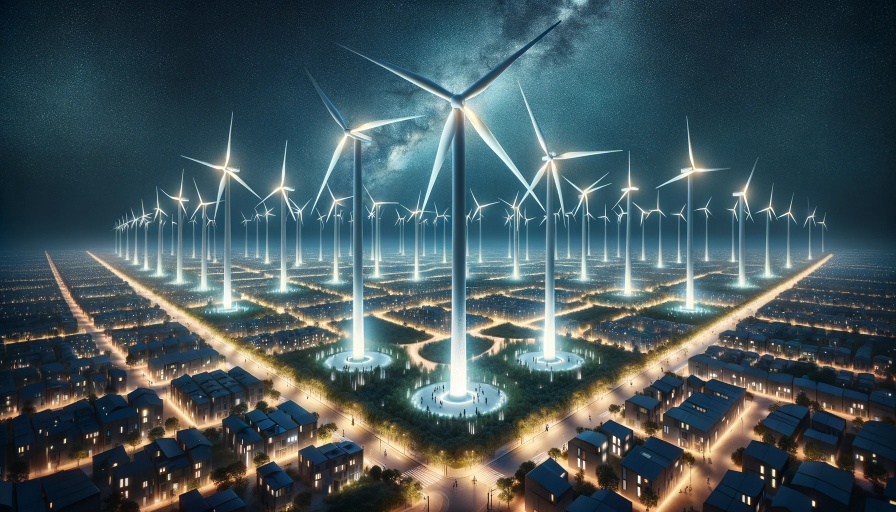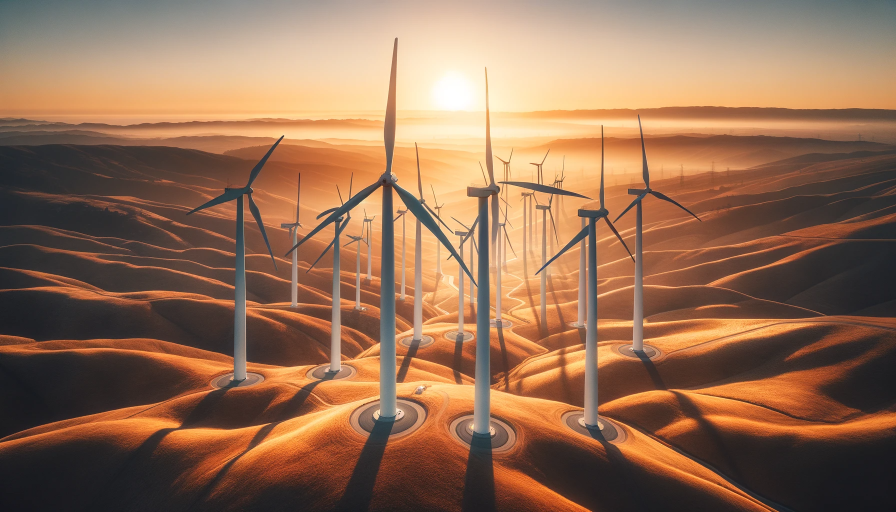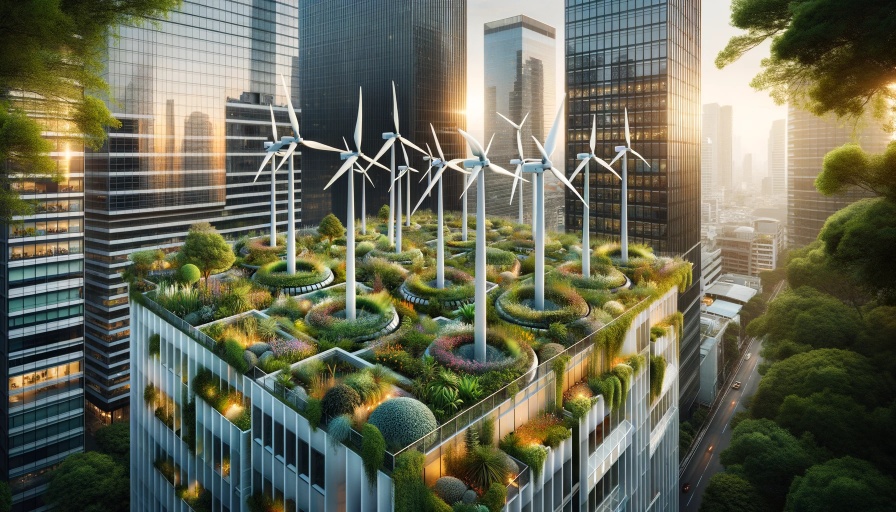As urbanization continues to expand, cities around the world face growing challenges related to energy consumption and environmental sustainability. The need for clean and renewable energy sources is more pressing than ever. One solution that is gaining popularity in urban areas is Vertical Axis Wind Turbines (VAWTs). These innovative wind turbines offer several advantages over traditional horizontal axis wind turbines, making them a viable option for eco-friendly energy generation in urban environments.
Table Of Content
We invite you to read: “The Power of Rotation: Vertical Axis Wind Turbines Explained”

Understanding Vertical Axis Wind Turbines (VAWTs)
Vertical Axis Wind Turbines are a type of wind turbine design where the rotor shaft is oriented vertically, unlike the more common horizontal axis wind turbines (HAWTs). VAWTs have been around for decades, but recent advancements in technology and design have made them more efficient and attractive for urban applications.
Advantages of VAWTs
- Space Efficiency: One of the primary advantages of VAWTs is their compact design. They take up less horizontal space compared to HAWTs, making them ideal for urban environments where space is limited.
- Low Wind Speed Performance: VAWTs are capable of generating electricity even at lower wind speeds. This feature is particularly valuable in urban areas where wind speeds are generally lower due to buildings and other structures.
- Omni-Directional: Unlike HAWTs, which need to be pointed into the wind to maximize efficiency, VAWTs can capture wind from any direction, making them versatile in urban environments with unpredictable wind patterns.
- Aesthetically Pleasing: VAWTs have a sleek and modern appearance that can be integrated into urban landscapes without causing aesthetic concerns.
Applications in Urban Areas
Vertical Axis Wind Turbines have several potential applications in urban areas that can help address energy needs and reduce the carbon footprint:
1. Powering Homes and Buildings
Installing VAWTs on rooftops or in small open spaces can generate electricity to power homes and buildings, reducing reliance on fossil fuels and grid electricity. This not only lowers energy costs but also contributes to a cleaner environment.
2. Street Lighting and Public Infrastructure
VAWTs can be used to power streetlights and other public infrastructure in urban areas. This reduces the energy demand from the grid and enhances the sustainability of the city’s infrastructure.
We invite you to read: “Quiet and Efficient: The Advantages of Vertical Axis Wind Turbines”

3. Charging Electric Vehicles
With the increasing popularity of electric vehicles (EVs), VAWTs can be integrated into EV charging stations to provide clean energy for charging. This promotes eco-friendly transportation options in urban areas.
4. Distributed Energy Generation
VAWTs can be deployed in distributed energy generation networks, allowing communities to generate their own renewable energy locally. This decentralization of energy production reduces transmission losses and enhances energy resilience in urban areas.
Challenges and Considerations
While VAWTs offer numerous benefits, there are also challenges and considerations to keep in mind:
- Initial Costs: The upfront costs of installing VAWTs can be relatively high. However, these costs can be offset by long-term energy savings and government incentives for renewable energy.
- Noise and Aesthetics: VAWTs can produce noise, and their appearance may not be suitable for all urban settings. Proper location selection and design considerations can help mitigate these issues.
- Permitting and Regulations: Installing VAWTs in urban areas may require adherence to specific permitting and zoning regulations. It is essential to navigate these legal aspects before installation.
- Maintenance: Like any machinery, VAWTs require regular maintenance to ensure optimal performance. Maintenance costs and access to the turbines should be factored into the overall project planning.
We invite you to read: “Vertical Axis Wind Turbines: A Green Revolution on the Horizon”

Conclusion
Vertical Axis Wind Turbines offer an eco-friendly and sustainable solution to the energy challenges faced by urban areas. Their compact design, low wind speed performance, and omni-directional capabilities make them particularly suitable for urban environments. By harnessing the power of wind energy, VAWTs can contribute to reducing greenhouse gas emissions, promoting renewable energy adoption, and creating cleaner, more resilient cities. While challenges exist, the benefits of VAWTs in urban areas are substantial and warrant serious consideration as part of a comprehensive approach to sustainable urban development.
FAQs
Why are VAWTs suitable for urban areas?
VAWTs are compact, work well at low wind speeds, and have an attractive design, making them ideal for limited urban spaces and aesthetics.
What can VAWTs power in urban environments?
VAWTs can power homes, buildings, streetlights, EV charging stations, and other public infrastructure, contributing to cleaner urban energy sources.
Are there any downsides to VAWTs in urban areas?
Challenges include initial costs, noise, aesthetics, and regulatory considerations, but proper planning can address these issues.
How can I get a VAWT for my urban property?
Consult renewable energy experts, check local regulations, and explore financing options to determine the feasibility of installing a VAWT.
You May Also Like
- Vertical Axis Wind Turbines: An Alternative to Traditional Wind Turbines?
- The Long Road to Vertical Axis Wind Turbines (VAWT)
- The Art and Science of Wind Turbine Placement: Finding the Perfect Windy Spot
- Economic and Environmental Impacts of Offshore Wind Turbines
- Are Vertical Axis Wind Turbines Really The Future?
- The Pros and Cons of Vertical Axis Wind Turbines

